The first time Ann Hardin’s face appeared on film was in the opening minutes of the 1929 film “Paris Bound.”
She’s a vision in white as a bride standing reverentially at her wedding altar next to her co-star, a baby-faced Fredric March. Her headpiece and veil tightly frame her face, with the veil wrapped around her forehead and hair, under her chin and across her neck.
And there it is, captured in close-up and immortalized for us to see nearly 100 years later: the ethereal beauty of Ann Harding.
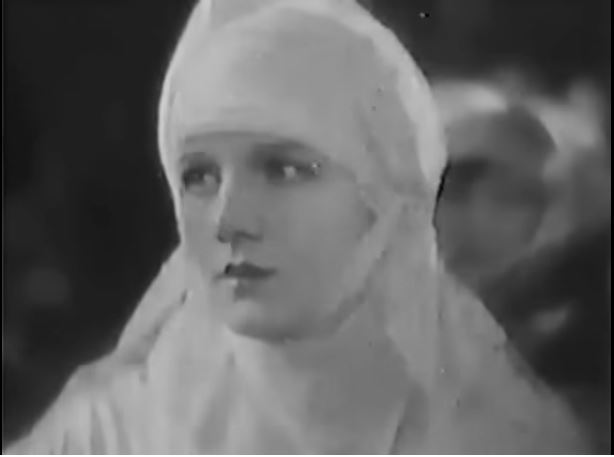
Even as a long-time fan of the actress, I was unprepared for the grace and luminescence she exuded right from the opening moments of her film debut. I guess I thought she somehow crafted her otherworldliness throughout her career, as if it was something that could be learned. Ridiculous, I know. She was born with it.
That realization makes me laugh at myself because the first time I saw Ann Harding I was so caught off guard by her voice (and not in a good way) that I missed how the camera loved her. (Of course I adore her voice now.) Let me explain. It was not a full movie, but a preview for her 1929 romance “Condemned.” I distinctly remember the moment in that short preview that she growled out “I love him. I will always love him. I would die for him.” (“Him” was her co-star Ronald Colman and how can you not join her in proclaiming love for him?)
It was a deep and throaty voice, dripping with desperation. I didn’t know what to make of it. Well, I was in the minority.
Critics and moviegoers who saw “Paris Bound” raved about Harding’s voice. Pathé studio took full advantage, promoting her as “the girl with the voice,” while ads for “Paris Bound” proclaimed “You’ll gasp at every word spoken!” Even dour New York Times critic Mordaunt Hall wrote that seeing Harding was a “joyous relief to study the work of an actress in a motion picture who is so modulated in her talking.”

“Paris Bound” was the first in a winning trifecta that started Harding’s film career. Only a month later, in September 1929, “Her Private Affair” was released, followed in November by “Condemned.” These weren’t bit parts, mind you, she was the star. In fact, “Condemned” is the film that pushed her into stardom. (The next year, she would be Oscar-nominated for her role in “Holiday.”)
That’s three starring roles in three movies in three months: What a way to start a career.
Stardom bound
Before her successful transition to film in 1929, Harding was a popular stage actress in the early 1920s. By 1926, however, she was pushing herself to exhaustion, ignoring doctor’s orders to the point she even collapsed on stage. Taking forced time off, she relocated to San Bernardino, Calif. (she purposefully avoided Hollywood on the advice of friends). The slower pace was good for her, and she wasn’t in a hurry to return to acting, especially since she was a new mother.
But Hollywood couldn’t get enough of Broadway actors, luring people like Kay Francis, Joan Blondell, Leslie Howard and Clark Gable from the stage to the big screen. Harding was soon on its radar. (When Harding did make her screen debut, publicity for the film read: Ann Harding Broadway Favorite in “Paris Bound.”)
On a fateful day, former Broadway actor and Harding’s friend George Reicher took her on a studio tour at Pathé, which was looking for a new star to help them compete with larger studios. Reicher thought she would be great on film (he was right), and he finally convinced her to do a screen test which she did almost as a joke with her husband, actor Harry Bannister. Pathé was so impressed they kept making her offers and she kept saying no – until she met a character she couldn’t refuse.
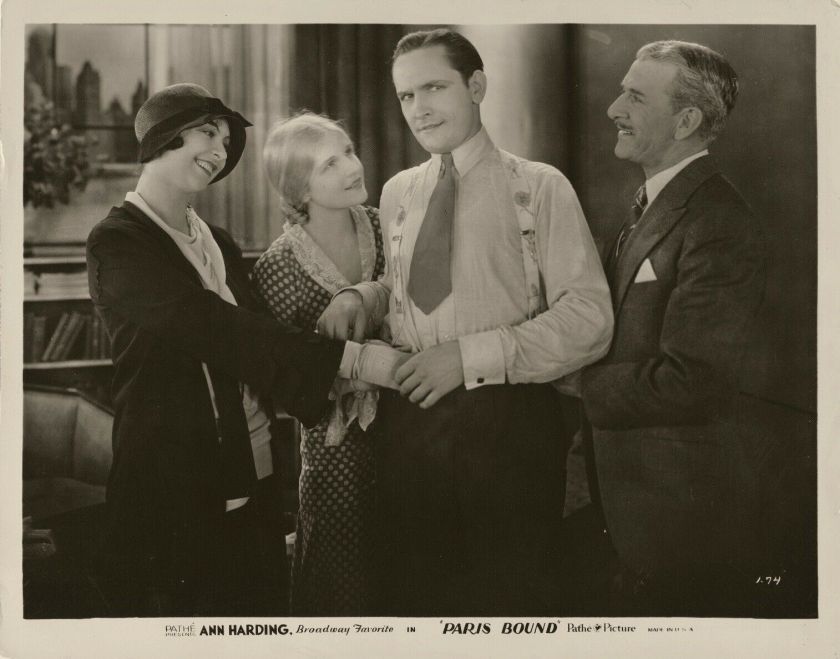
Mary Hutton was a character in Philip Barry’s provocative 1927 play “Paris Bound” about a young married couple who are faithful in heart and mind, but not necessarily body. Reicher was the dialogue director for the film adaptation and asked her about playing the role. Harding loved the character of Mary Hutton enough to make it her first film role.
“It’s such a grand part that I can hardly think of anyone else having it. I loved the character. She has intelligence; she thinks straight and recognizes her mistakes,” Harding is quoted as saying in her biography, “Cinema’s Gallant Lady” by Scott O’Brien.
And that’s exactly who she embodied on screen in “Paris Bound”: a smart, thoughtful, passionate and independent woman. Let’s meet her as I write about Ann Harding’s film debut as part of the Classic Movie Blog Association’s “Screen Debuts & Last Hurrahs” spring blogathon.
Stardom bound
The wedding that opens “Paris Bound” between Mary (played by Harding) and Jim (played by March) is a solemn event, not only for the vows being spoken but because of the obvious unhappiness of the guests. There’s the groom’s mother and father, long divorced after his infidelity; the dark-haired and pouty Noel (Carmelita Geraghty), miserable about Jim’s marriage; and the forlorn composer Richard (Leslie Fenton), who loves Mary.
They will all influence the lives of our young couple who are clearly over the moon in love and thrilled to be married.
“I’m a fool about you,” Mary tells her handsome groom while guests are waiting for them at the reception.
They kiss, they touch, they speak in soft tones. They are wrapped in love’s embrace, emotions heightened by the palpable chemistry between the actors.

Their love is undeniable but there is something else they are acknowledging as they reference being a “modern couple.” They are so sweet that even as you hear the newly married Mary say she doesn’t believe in monogamy, you can’t quite believe it. “We’re too fond of people,” she says, as the reason she doesn’t expect to “never see another man and I don’t expect you to never see another woman.”
You’ve got every right to be puzzled because, as she does throughout the film, Harding is physically showing us the complexities of this woman. As she speaks words implying an open marriage, she gazes at Jim in adoration, rubbing his arm, putting her hand on his chest, embracing him. The words and the actions don’t quite match, nor will they in other important moments.
“Whatever happens, let’s never quit each other,” Jim tells her with words they say as a solemn vow.
But, as we see early, temptation will follow them in the form of two of the unhappy wedding guests.
Richard, the sad introspective composer, pines away for Mary. “I won’t forget the notes of a melody,” he says to her and about her. (Sigh – the man is tragically smitten.)
Noel is bold, admitting her love for Jim with his new bride in the next room. She grabs him, trying to kiss him as he politely lets her talk but holds her back. “I am yours,” she says, even as he’s telling her to “quit the party and go home.” (“Quitting” a relationship is a common phrase.)
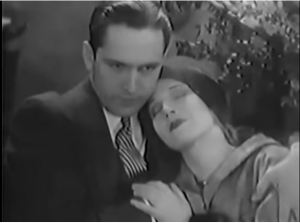
The film abruptly cuts to the third year of Mary and Jim’s marriage. They’re parents of a toddler son and their love appears strong from their cuddles and kisses during a tearful goodbye as Jim sets sail for a six-week business trip to Paris.
It’s during these goodbyes at the ship – there will be another one – that Harding best displays the depth of her character. She refuses to join her husband even as she tearfully clings to him, already missing him before he goes. She pushes him away, then pulls him tight, showing us how her beliefs about marriage are at odds with her heart.
Even the next year (it’s an annual business trip), she stands firm in staying home believing married people “need a holiday from each other.” Harding’s face bears the pain of that decision, her body racked with emotion as she again sends her husband off, “Paris Bound.”
Jim hates “the forced holiday,” but she insists he goes alone.
But will he really be alone since Noel connives to “bump” into him overseas, asking if he has time for “coffee”?
Meanwhile Mary innocently spends time with her long-suffering friend Richard at her home where he’s composing his next ballet on her grand piano.
Passions will erupt, and beliefs will be questioned. What will never be in doubt is Mary and Jim’s love for each other, thanks to the lovely performances of Harding and March. Their scenes are intimate and natural, surprising qualities in a film made at a time when many stars were acting with broad gestures like they were still on stage and trying to reach the people in the back of the theater.
But not Harding. She was a natural in front of the camera who connected with moviegoers as a real person, not just a character. She would make 40 films, mostly from 1929 to 1950, and there was always an innate grace and elegance to her performances through movies like “Double Harness,” “When Ladies Meet,” Holiday” and “The Fountain.”
Oh, and we can’t forget the Harding film that remains my favorite, “Condemned,” the one that started it all for me. Harding plays the beleaguered wife of a violent prison warden on Devil’s Island who falls in love with inmate Ronald Colman. That scene I first saw in a preview where she desperately screams of her love for him and it made me almost … laugh? I now think it was because she was so raw in conveying her anguish that I couldn’t handle it. She couldn’t have given more of herself as an actress at that moment.
It’s no wonder that audiences in 1929 immediately fell in love with Harding or that movie fans like me continue to do so today, nearly 100 years after her film debut.
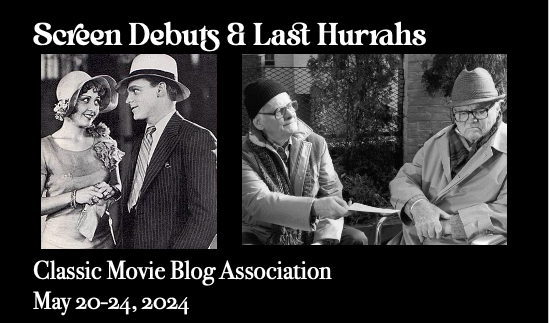
The blogathon
This post is part of the “Screen Debuts and Last Hurrahs” blogathon that is presented by members of the Classic Movie Blog Association. To read more contributions about the first or last films of filmmakers and actors, please click here. And if you write about classic movies, consider joining CMBA.

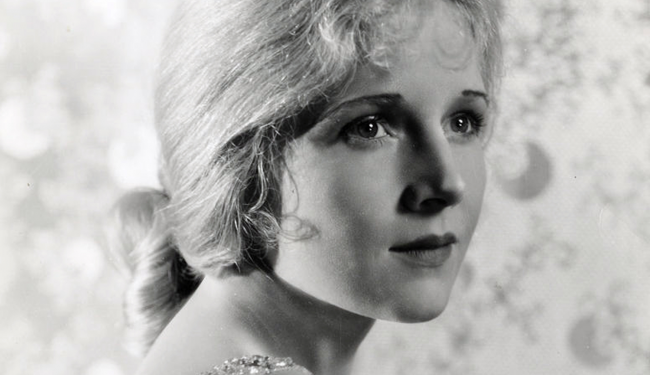
She certainly is a unique star. She seems a rather disturbing (in a good way) combination of ethereal beauty and goodness and just plain down to earth intelligence. And that hair. Thanks for an illuminating post. Your admiration shines through.
LikeLike
Thanks for reading. I love your description of her – it really captures her spirit.
Toni
LikeLike
I was also taken aback by her voice when I first saw her – just didn’t expect it. And I agree with the previous commenter about her hair. She always had magnificent hair.
LikeLike
Yes, her hair was indeed magnificent. Thank you, again, for reading.
Toni
LikeLiked by 1 person